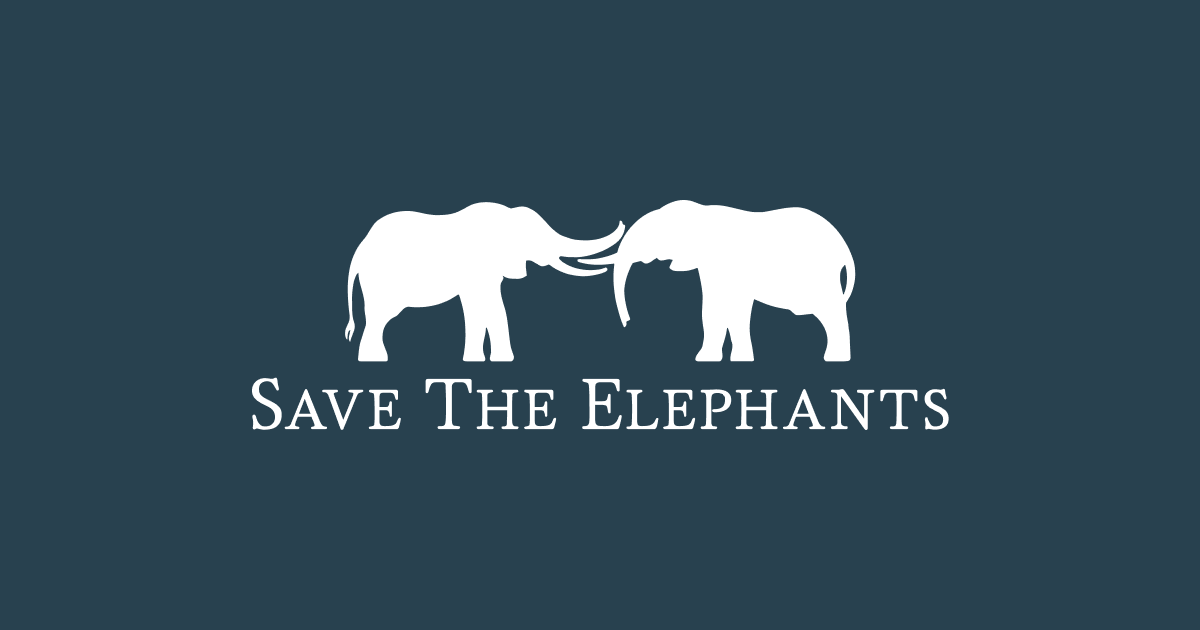I was fortunate to be part of the Save the Elephants group that attended CITES (the Convention on Worldwide Commerce of Endangered Species of Fauna and Flora) in Panama Metropolis in November 2022. It was unbelievable to see the entire fully totally different representatives from throughout the globe gathered in a single place to debate vital wildlife points. Our group comprised Dr. Lucy King (Head of Human-Elephant Coexistence Program), Dr. Chris Thouless (Director of Evaluation & Elephant Catastrophe Fund), Dr. Festus Ihwagi (Evaluation Scientist in Spatial Ecology) and myself.
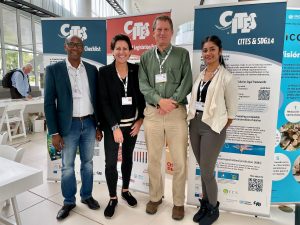
Left to correct: Festus, Lucy, Chris and myself on the CITES gross sales house
One in all many most necessary focuses of our journey was to present our new Human-Elephant Coexistence Toolbox handbook on the event. The Toolbox is a perfectly illustrated handbook of tried and examined 80+ elephant deterrent methods aimed to empower rural African communities and cut back human-elephant battle. We arrived in Panama Metropolis laden with suitcases full of copies of the handbook, in English, French and Swahili, ready helpful them out to anyone who is probably . We didn’t discover merely how widespread they could be! We managed to distribute a whole of 100 copies of the toolbox to twenty-eight worldwide areas. We moreover held a specific side event, supplied by Drs King and Thouless, to introduce the Toolbox to the CITES delegation.
We had many visitors to our gross sales house exhibiting curiosity inside the Toolbox, along with NGOs and authorities officers who shared their tales of human-elephant battle (HEC). Representatives from the Southern African, particularly, instructed us how important the state of affairs was of their worldwide areas and expressed their issues at how shortly HEC was escalating. There have been moreover quite a lot of questions regarding the effectiveness of the Toolbox which our group was able to deal with by exhibiting examples of merely how worthwhile many of the tried and examined methods have been all through Africa. The extent of curiosity inside the Toolbox at CITES was a constructive indication that we’re on target and that it has the potential to make a constructive have an effect on to communities that urgently need choices.
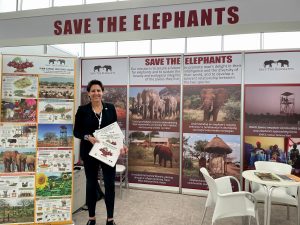
Dr. Lucy King with the HEC Toolbox handbook at CITES © Meha Kumar
Nonetheless it wasn’t all regarding the Toolbox. Our group moreover took half in some important discussions spherical wild elephant welfare along with a very heated debate over a proposal by a lot of African worldwide areas to export keep elephants from the wild open air the continent. To our discount, the proposal was rejected with CITES agreeing that the commerce in keep African elephants should be restricted to ‘in situ conservation programmes or secure areas inside the wild contained in the species’ pure and historic range in Africa.’ It was a discount to take heed to delegates recognising elephants as ‘extraordinarily social animals’ and that eradicating from their social groups would disrupt the wild populations and have ‘detrimental outcomes on the bodily, behavioural and social well-being of elephants far from these groups.”
There was moreover rigidity spherical a proposal from Burkina Faso, Equatorial Guinea, Senegal and Mali to uplist the standing of all wild African elephants from Appendix II to Appendix I. This proposal, which was rejected, would have meant that all species of African Elephants would have acquired most security all through the continent, reducing the pressure from ivory poachers, if it had been worthwhile. A second proposal modification from Botswana, Zimbabwe, South Africa and Namibia to request to advertise elephant ivory and hides was likewise rejected by a big majority of the occasions.
STE’s Dr Thouless was part of a panel that supplied the model new IUCN African Elephant Specialist Group report on forest elephants at CITES. Preliminary outcomes from the newest standing report level out that the catastrophic decline in forest elephant numbers has stopped. The unhealthy data, nonetheless, is that the overwhelming majority of those critically endangered elephants are literally current in solely two worldwide areas – Gabon and Congo. In presenting the report, the panel warned that whereas Gabon and Congo have been vivid spots for forest elephants, important movement was nonetheless needed inside the far reaches of the species’ range.
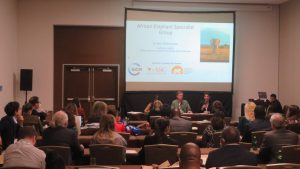
Dr. Thouless (second from correct) with the IUCN African Elephant Specialist Group group presenting the African Forest Elephants report at CITES © Festus Ihwagi
A Kenyan proposal to establish a fund accessible to range states upon non-commercial disposal of ivory stockpiles was rejected. This fund, if it had been accepted, would have prevented the resumption of financial ivory product sales or buyouts, extra providing help for elephant conservation and promotion of human-elephant coexistence. Nonetheless, Dr Ihwagi later instructed me that the ‘the CITES event on elephant proposals was a substantial success no matter dropping on the Kenyan proposal.”
After 11 days in Panama, our weary group returned to Kenya with a renewed sense of hope for the way in which ahead for elephants, quite a lot of vital new contacts and allies from the elephant conservation world, and pleasure throughout the unbelievable response we acquired to our new Human-Elephant Coexistence Toolbox book.
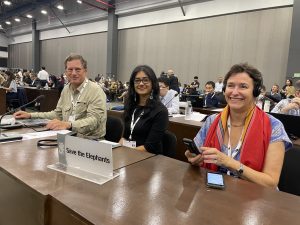
STE group all smiles at CITES © Lucy King
